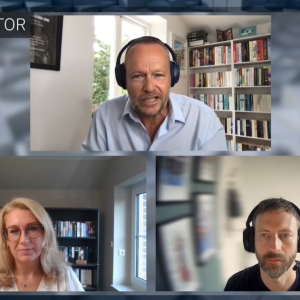The Netherlands-based Ericsson Paging Systems BV arm of the Swedish telecommunications supplier has revealed more details of its so-called CT-3 personal telephone, built to conform to the Digital European Cordless Telecommunications DECT standard that is not due to be ratified until late next year at the earliest. As reported last week (CI No 1,362), the DCT-900 phone will have two major roles: that of a mobile office phone with a radio-link to the office private branch exchange, and as a portable device similar to Telepoint, which is linked to base stations for use outside the office; a further residential application is also intended. The DCT-900 is not compatible with the current CT-2 offerings, which use Frequency Division Multiple Access – FDMA; Ericsson is using what it calls a more revolutionary method of channel allocation, known as Time Division Multiple Access TDMA, which works by allocating channels to various timeslots. The DCT-900 technology divides a 1MHz block into 16 one millisecond timeslots, which are then used to create eight duplex channels – these eight channels together form a time frame of 16mS in duration. A fully-implemented DCT-900, which covers 8MHz, would then be able to access 64 full duplex channels. As the user is moving about, Ericsson says the phone will monitor available channels both in its own cell and within adjacent ones, so that when a handover to another cell is required, the handset tells the central switch, via the base station, to connect up the new voice path in parallel to the old voice path and finally close the old path down. Since all this occurs in parallel to the existing conversation, the handover takes place within the period of one timeframe – 16mS – thus providing what Ericsson claims is seamless handover. The length of the timeslot for data transmission can also be increased if required; the DCT-900 presently offers a data speed of 32Kbps on one timeslot, but two, four or eight timeslots feasibly could be allocated for data transmission, giving speeds of 64, 128 or 256Kbps. This data can be received during conversations, and either be stored in memory or put onto the DCT-900’s 12-digit Liquid Crystal Display immediately. Operating on the 800MHz to 1,000MHz frequency range and using 4MHz bandwidth, the DCT-900 weighs 6.7 ounces and with full charge offers six hours talktime and 60 hours standby; speech encryption comes as standard. In the office environment, it will be able to work with non-Ericsson private branch exchanges at a simple analogue line level, while the Ericsson cordless exchange, due to be available before the end of 1991, will be able to support 50,000 terminals over one square kilometre. The initial cost of fully-connected terminals with base stations will be about double that of the wired alternative when they are made commercially available for the office application in Sweden this October; interest in DCT-900 will depend on whether potential users take the Ericsson view that this is an opportunity to test a DECT-like product before DECT is finally introduced, or whether they regard it as an interim system and prefer to wait a few years for all of the complexities the standard to be ratified. In the meantime, field trials with the Dutch PTT are set for this summer, and Ericsson has already gained approval to test CT-3 in Canada, the US and Australia, with the intention of putting DECT forward as a world standard when it finally arrives.






